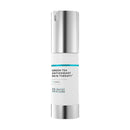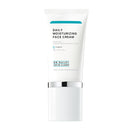Miso: Don't Boil It (Recipe Included)

Miso: don't boil it because this nutritional powerhouse is fermented and you want it live! Once you understand what makes miso such a nutritional bonanza, you will understand why I say to never boil miso. Miso (pronounced mee-so) has a subtle yet complex flavor. Miso also comes in many delicious varieties.
What exactly is Miso?
Miso is a fermented paste that’s made with rice or other grains that have been inoculated with a specific mold named Aspergillus oryzae. A preparation of salted, cooked soybeans is added and then the whole thing is allowed to ferment before being ground into a paste. The entire process can take weeks, months or years. The color, taste, texture and level of saltiness depends wholly on different combinations of the above.
There are many varieties of miso, but here is an assortment of some of the more commonly used types of misos:
- Natto miso: made from ginger and soybeans
- Genmai miso: made from the husked grains of roasted brown rice and soybeans
- Soba miso: made from buckwheat and soybeans
- Mugi miso: made from barley and soybeans
- Kome miso: made from white rice or sweet brown rice and soybeans
- Hatcho miso: made from soybeans
A good rule of thumb for judging the flavor is the color of the miso. Miso ranges from a light beige color to a dark brown or even deep red color. The lighter colors indicate a lighter flavor while the darker colors indicate a more intense flavor.
What should you look for in the store when it comes to purchasing miso?
Some kinds of miso are pasteurized, while others are not.
I recommend that you look for miso in the cold case at the health food store, sold in small plastic tubs.
The miso packets you can buy in the dry goods section may be flavorful, but they have been pasteurized and have lost their health-supportive enzymes.
Unpasteurized miso has live cultures and abundant lactic-acid forming bacteria, protein and enzymes that aid digestion.
These powerful enzymes are destroyed with industrial pasteurization AND cooking at high heat.
It’s best to get the soup or whatever dish you plan to add miso to, nice and hot on the stove. Then take it off the heat, stir in the miso and dissolve it before serving. Natural Chef Monica Sallouti
Another good option would be to make the sauce below and serve it spooned on already cooked foods.
Miso is like fine wine; it will get better with age if kept in the fridge.
If a white mold appears on the surface, simply scrape it off as it is harmless. You could even scrape it off and stir it back into the rest of the miso! Yep, it's true.
What are the health benefits of miso?
Miso is a good source of:
- Minerals, including zinc, manganese, phosphorous, iron and copper.
- Miso contains vitamins B2 and B6.
- Miso is a good source of protein and fiber.
- The antioxidants in miso are more easily absorbed than those in unfermented soybeans and soy products.
- Miso has been found to be as cancer-protective as other soy foods, particularly for breast cancer.
- Probiotics
While miso is produced from an organism that makes B12, it might provide this key vitamin to vegetarians, but it is unclear if this form of B12 is exactly what meets the requirement necessary for a vegetarian to get enough of this important vitamin.

How to use miso sauce
This sauce is absolutely delicious on brown rice with roasted or steamed vegetables. It’s good as a slaw dressing too.
If you use this sauce as marinade, be sure to serve some on the side so you get the benefit of the un-heated miso.
Plan on using this sauce within 24 hours, and keep it in the fridge. Enjoy!
References:
Balch, Phyllis A. Prescription for Dietary Wellness. New York: Avery, 2003.
Murray, Michael. The Encyclopedia of Healing Foods. New York: Atria Books, 2005.

Certified Natural Chef Monica Sallouti’s lifelong passion for delicious nutritious food comes from both her formal training and time spent in the kitchens of her two grandmothers as a young girl. She honed her culinary skills and nutritional education at the Holistic Nutrition and Culinary Arts program at Bauman College in Penngrove, CA. The specialty of nutrition for Chef Sallouti was sparked after a health crisis some 19 years ago. In her late 20’s, she was diagnosed with metastatic melanoma. As part of her “treatment,” she developed a keen awareness of the inextricable link between food, cooking and health. Now, 19+ years later, Sallouti brings her knowledge, culinary creativity and care to both her clients.










